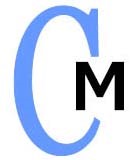How to use YouTube for Marketing?
Have you just started on YouTube with a company video?
Are you still not getting the views you hoped for? Even with a handful of videos under your belt, you may not have mastered one of the most important aspects of the process which is YouTube SEO.

Getting high rankings on YouTube is usually a result of two things.
You will need to appeal to the platform, but you will also need to appeal to your audience so you actually get higher view counts and subscribers. Here are a few engagement strategies to reel in your viewers.
Keyword research
After you have uploaded a video on YouTube, you’ll be asked to fill out the title, description, and tags for it. Sounds easy enough, but you have some homework to do first.
Before you even begin filling out your title or description, you’ll want to know what your focus keywords or key phrases will be. Your first stop will be to see the competition surrounding the keywords you’re looking to use. Whether it’s in the form of Google’s own Adwords Keyword Planner or the many other free options it’s up to you, but this will allow you to see popularity and the competition you’ll be faced with.
Short tail vs long tail keywords
Had your heart set on “DIY crafts” for your keyword, only to find out that it’s incredibly popular already? Shorter key phrases are referred to as short tail, and you’ll find this is where the greatest competition lies. If you think your fledgling YouTube channel can’t compete with short tail keywords, don’t worry, you have options…
Long tail keywords allow you to get a little more specific, while still using the initial keyphrase you wanted to. So instead of “DIY crafts,” you could make it “DIY Crafts for beginners” or “DIY crafts for Valentine’s Day.” While it may be searched less-often, it also offers less competition, better targeting and if you’re looking into advertising, it’ll cost much less than short tail keywords.
Are your keywords video-friendly?
Think you might have nailed it on your keywords for your video?
While this may be true for YouTube itself, it may not be the case for search engines. The best way to find out is to actually search for your desired keywords in Google. Put simply if you are looking to see if videos appear on the first page when searching your keyword. If they do, you’ll have a better chance at ranking well in both YouTube and Google.
Terms like “how to,” “review,” “hands-on” all have great potential to show videos on the first page of Google, so you’re pretty safe if you’re using one of them.
Appeal to YouTube
Now that you have done diligence on your keywords, it’s time to apply all you have learned…
Title
The content of your video will determine how your title is structured, but it’s important to have your keywords in the first portion of the title. If your video is about how to make doughnut ice cream cones, “How to” or “Do it yourself” would naturally fall in the beginning of the title, but that may not always be the case, depending on your keywords.
It’s best to keep your title short and concise. Anything other than the essential words for the title can be put in the description section below. As along as the title showcases your keywords prominently and the point gets across, you’re good to go.
Speaking of titles, a good practice when uploading to YouTube is to use your keywords in the filename of your video. Something like “YouTube_DIY_Crafts_Valentines_Day.mp4” should suffice.
Description
Much like Google bots don’t actually see your photos when indexing websites, YouTube doesn’t know exactly what your video is about when you first upload it.
It’s important to note that long tail keywords do well in your description, especially if long tail is the primary route you’re going in. Remember, the detailed approach may be less popular, but it’s more efficient (at least in the beginning). Why? Because writing a long description is beneficial for your video, as it gives more information to both YouTube and the viewer, and this can positively affect your ranking.
Tags
While there’s a debate on whether tags are still important or not, it’s another location to describe your video that YouTube offers, so use it! A mix of specific and general tags is suggested, allowing your video to span multiple avenues. You can use both your short and long tail keywords here as well.
The best practice is to add as many tags to properly describe your video as needed. If you feel that your clip needs 20 tags, no one’s stopping you.
YouTube SEO may seem a bit tricky, but with the above tips at your disposal, you’re equipped to climb the ranks!

